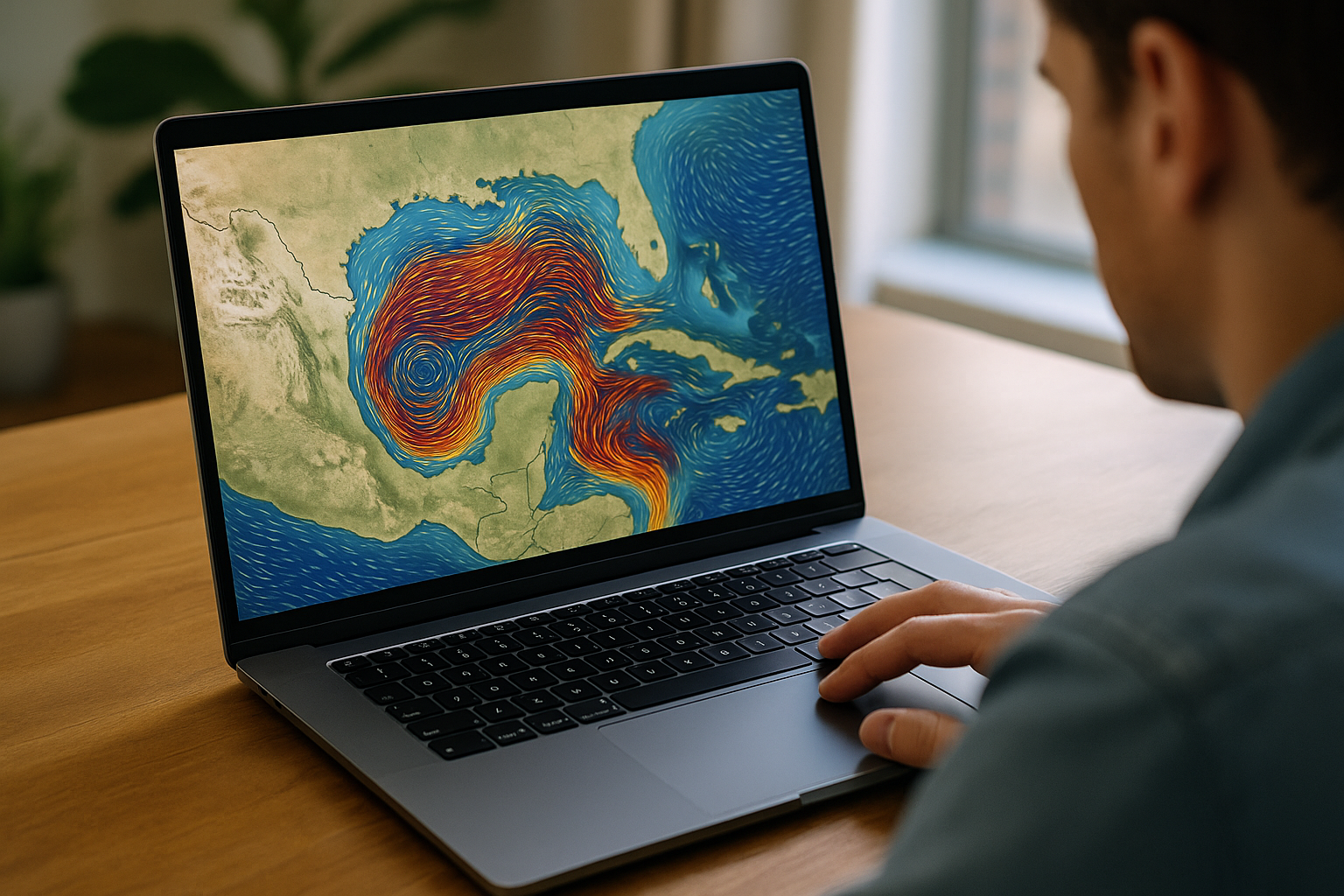AI Ocean Forecasting Breakthrough Earns Top Honors, Promises Offshore Impact
“AI-based forecasting could revolutionise ocean prediction,” said Dr Edward Steele, Met Office IT Fellow for Data Science and lead author of the award-winning paper.

A cutting-edge artificial intelligence (AI) model developed by researchers at the Met Office and the University of Exeter is making waves in the marine science community, with new research demonstrating its ability to forecast ocean currents in the Gulf of Mexico—using just a laptop. This breakthrough, grounded in the team’s evolving Machine Learning for Low-Cost Offshore Modelling (MaLCOM) framework, has already garnered international recognition, including the American Society of Civil Engineers (ASCE) Offshore Technology Conference (OTC) Best Paper Award 2025.
This achievement marks a significant step forward in making accurate ocean forecasts more accessible, particularly for applications in offshore energy, search and rescue, and defence operations.
“AI-based forecasting could revolutionise ocean prediction,” said Dr Edward Steele, Met Office IT Fellow for Data Science and lead author of the award-winning paper. “We show the exciting potential of very low-cost, observations-driven, AI-based models, even when constrained by limited data.”
From UK Coasts to the Gulf of Mexico
The MaLCOM framework was initially designed to predict regional ocean waves around the United Kingdom. However, in its latest iteration, researchers have adapted it for forecasting ocean currents in the Gulf of Mexico—a region vital for maritime industries and prone to extreme weather conditions.
The key feature of MaLCOM lies in its:
-
Low computational requirement (can run on laptops)
-
Reliance on sparse observational data
-
Adaptability to new regions and ocean variables
-
Transparent model architecture, enabling clear insights into the spatial and temporal dynamics of forecasts
Dr Ajit Pillai, University of Exeter Senior Lecturer and Royal Academy of Engineering Research Fellow, emphasized the significance of this flexibility:
“This is an exciting application of the MaLCOM framework to new parameters and new geographical regions, providing new decision-making capability to help offshore safety and workability.”
Transforming Ocean Forecasting with AI
Unlike traditional physics-based ocean models, which require massive computational power and extensive sensor networks, MaLCOM harnesses machine learning to extract meaningful insights from hyper-sparse data. It maintains impressive accuracy at **short-range forecast horizons—up to 12 hours ahead—**especially under non-extreme conditions.
This evolution in forecasting presents several immediate advantages:
-
Affordability: Low operational cost removes barriers for developing regions and smaller agencies.
-
Speed: Faster model runs can support near real-time decision-making.
-
Scalability: Easily deployable across different marine environments with minimal infrastructure.
The model’s effectiveness was benchmarked against the Met Office’s operational physics-based systems, showing comparable performance in everyday conditions. It’s a leap toward democratizing access to oceanographic intelligence.
Built on Collaboration: Academia, Government, and Industry
The MaLCOM framework originated as a University of Exeter research project nearly five years ago, with strong participation from the Met Office. The ongoing success of the project reflects the value of cross-sectoral partnerships in emerging technologies.
Dr Steele highlighted the importance of these collaborations:
“This is an example of the benefits of academic, government, and industry organisations working together. In rapidly-evolving fields such as machine learning, partnerships are essential to realizing the ambition and vision for AI in weather and climate science.”
The researchers worked hand-in-hand with industry stakeholders, ensuring the model’s development aligned with real-world needs, such as operational decision-making, environmental risk assessment, and maritime safety.
Looking Ahead: Expanding Use Cases and Capabilities
While the current focus is on ocean current prediction, the research team plans to refine and scale the MaLCOM framework further. Future updates may include:
-
Enhanced capabilities for extreme weather scenarios
-
Regional customization for tropical basins and Arctic waters
-
Integration with satellite-based and drone-collected data
-
Use in training autonomous marine systems
With growing demand for climate-smart infrastructure, resilient maritime logistics, and sustainable offshore energy, MaLCOM could become a cornerstone technology in the digital marine era.
A Well-Earned Honor
The ASCE Offshore Technology Conference Best Paper Award 2025 not only affirms the research's technical merits but also celebrates its practical relevance and forward-thinking design.
“It is always exciting for research to deliver real impact,” said Dr Pillai. “The recognition of the team’s work reflects our progress to date—these are exciting times ahead.”
As the world seeks low-cost, data-smart tools to tackle complex environmental challenges, innovations like MaLCOM point the way forward—proving that powerful forecasting needn’t come at a high computational price.










